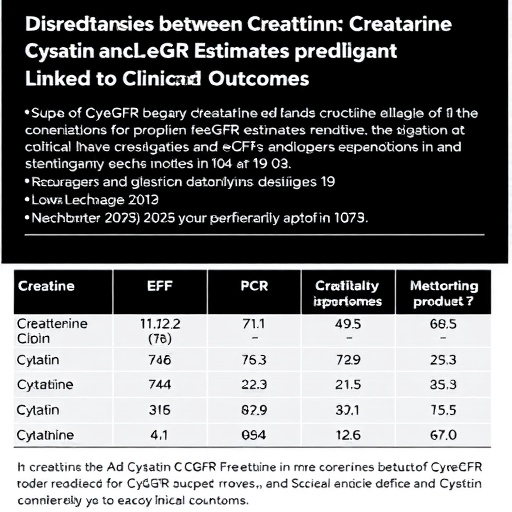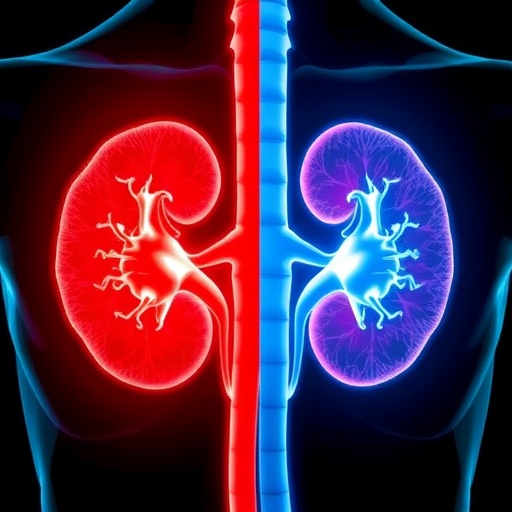A recent comprehensive analysis from Johns Hopkins Medicine and the Johns Hopkins Bloomberg School of Public Health has revealed a paradoxical trend in the United States: despite robust clinical evidence underscoring the health benefits of neonatal male circumcision (NMC), the rate of this procedure performed on newborn males has experienced a significant decline over the past decade. This unexpected downturn unfolds against a backdrop of resolute endorsements from leading health authorities worldwide, presenting an intriguing public health conundrum that demands closer scrutiny.
Neonatal male circumcision, a surgical procedure involving the removal of the foreskin from an infant’s penis, is one of the oldest documented medical practices. Historically, its purported benefits have been recognized for centuries, with modern biomedical research corroborating its protective effects against several urogenital and sexually transmitted infections. Empirical studies have consistently demonstrated that circumcision decreases the incidence of conditions such as balanitis (penile inflammation), urinary tract infections during infancy, and markedly reduces the acquisition risk for human immunodeficiency virus (HIV), genital herpes simplex virus, and human papillomavirus (HPV). The latter is intimately linked with malignancies of the oral cavity, cervix, and penis, underscoring the long-term oncological implications of the procedure.
In alignment with these findings, authoritative institutions including the World Health Organization (WHO), the American Academy of Pediatrics (AAP), and the U.S. Centers for Disease Control and Prevention (CDC) have issued formal recommendations advocating for neonatal circumcision based on its lifelong health advantages. The WHO’s 2007 guidance, followed by the AAP’s 2012 report and the CDC’s 2018 reaffirmation, collectively endorse the procedure as a prophylactic intervention with substantial benefits extending into adulthood. These endorsements are grounded in rigorous risk-benefit analyses and public health modeling that indicate improved health outcomes and potential cost savings of circumcision on a population scale.
Contrary to these endorsements, the newly published study in JAMA Pediatrics elucidates a downward trajectory in the prevalence of NMC within U.S. hospitals from 2012 through 2022. An extensive review of more than 1.5 million hospitalizations of male neonates revealed a decline from 54.1% in 2012 to 49.3% in 2022 in the proportion of neonatal males undergoing circumcision. Dr. Aaron Tobian, a pathology professor at Johns Hopkins University School of Medicine and co-senior author of the study, emphasizes the significance of this trend, noting that it persists across diverse demographic and institutional contexts, marking a substantial shift in neonatal surgical practice.
A particularly striking aspect of the findings is the variation in decline across racial and ethnic groups. For instance, circumcision rates among white male neonates—a demographic historically exhibiting high circumcision prevalence—fell from 65.3% to 60.0% over the study period. Conversely, rates among Black infants remained stable or marginally increased, moving from 64.9% to 66.1%, while Hispanic circumcision rates exhibited minor fluctuation, from 21.2% to 21.0%. Other groups, including Asian or Pacific Islanders and Native Americans, also experienced decreases, highlighting a multifaceted demographic landscape influencing procedural uptake.
Socioeconomic factors further contextualize these trends. Neonates residing in the highest-income ZIP codes and those with private insurance coverage initially had the highest rates of circumcision; however, these groups also demonstrated the steepest reductions, with prevalence falling from 59.4% to 51.1% and 64.2% to 56.3%, respectively. This decline among affluent and insured populations suggests that circumcision decisions may be shifting even where financial barriers are minimal, potentially reflecting broader cultural and informational influences.
The study’s authors posit several plausible factors behind the decline in NMC rates. Paramount among these is an emergent parental skepticism and distrust toward conventional medical recommendations—an attitude gaining momentum amid a broader societal reevaluation of healthcare advice. This phenomenon, while complex and multifaceted, appears to influence parental decision-making concerning elective neonatal procedures, including circumcision, leading some to opt against the intervention despite its documented health benefits.
Cultural dynamics also bear heavily on the circumcision landscape in the U.S. The growing Hispanic population, characterized by historically lower rates of neonatal circumcision, exerts a demographic influence that may depress overall circumcision prevalence. Given that Hispanics constitute the largest and fastest-growing ethnic group in the United States, the aggregate rate of neonatal circumcision is affected by this shifting demographic composition, which intertwines cultural norms and medical decision-making.
Policy changes further compound these trends. Before the study period commenced, 17 states had discontinued Medicaid coverage for routine neonatal circumcision, effectively erecting financial barriers for families of lower socioeconomic status. This policy shift likely curtailed access to circumcision services for economically disadvantaged groups, thereby contributing to the overall downward trend documented in the study. This structural factor intertwines health economics and public policy, highlighting the intricate relationship between insurance frameworks and health behavior.
The dataset underpinning this analysis derives from the nationally representative Kids’ Inpatient Database (KID), compiled every three years by the federal Agency for Healthcare Research and Quality. The KID encompasses a vast array of pediatric hospitalizations, providing a robust platform for epidemiological inquiry. The meticulous data usage enhances the reliability and generalizability of the study’s conclusions, fortifying its impact on public health discourse.
Beyond the epidemiologic observations, this research invigorates discussions on the interplay between evidence-based medicine and public perception. The attenuation of neonatal circumcision rates amid prevailing scientific consensus invites deeper exploration into the mechanisms of health communication, trust in medical institutions, and the socio-cultural milieus shaping parental choices. It gestures toward an urgent need for healthcare providers to engage more effectively with families, addressing concerns, dispelling misinformation, and promoting informed decision-making.
Moreover, the decline in circumcision rates may have long-term public health repercussions. Given the procedure’s role in reducing risks of serious infections and cancers, decreased prevalence could translate into increased disease burden over time, amplifying healthcare costs and morbidity. Such potential outcomes underscore the importance of monitoring circumcision trends and their implications continuously.
In synthesizing extensive patient-level data with demographic and socioeconomic variables, the Johns Hopkins study provides a nuanced portrait of neonatal male circumcision patterns in contemporary America. It situates the medical procedure within a dynamic matrix of cultural, economic, and institutional currents, underscoring that clinical recommendations alone may be insufficient to sustain practices that rely fundamentally on parental consent and social endorsement.
The study, supported in part by the National Institute of Diabetes and Digestive and Kidney Diseases, part of the National Institutes of Health, exemplifies the critical role of interdisciplinary research in illuminating public health phenomena. With no conflicts of interest reported aside from the funding disclosures, the study contributes robust, unbiased evidence to a topic of enduring medical and societal relevance.
As neonatal circumcision remains a subject of ethical debate and health policy scrutiny worldwide, the evolving trends revealed by this research invite ongoing attention from clinicians, public health officials, and policymakers alike. They highlight an essential tension between medical evidence and societal factors driving healthcare utilization, emphasizing the complexity inherent in translating scientific knowledge into community practice.
Subject of Research: Neonatal Male Circumcision Trends and Public Health Implications in the United States
Article Title: Declining Rates of Neonatal Male Circumcision in the United States Despite Medical Endorsements: Insights from a Decade of Hospital Data
News Publication Date: 2024
Web References: https://doi.org/10.1001/jamapediatrics.2025.2464
Image Credits: Graphic created by M.E. Newman, Johns Hopkins Medicine
Keywords: Surgical procedures, Neonatal circumcision, Public health, Epidemiology, Pediatric health, Infectious disease prevention




